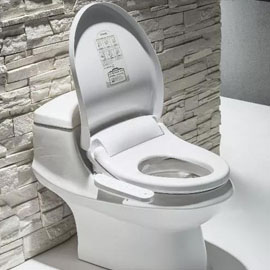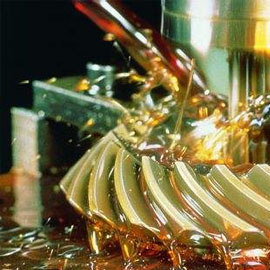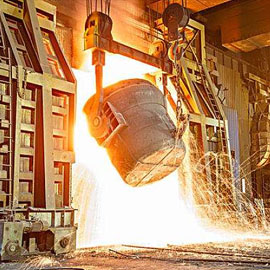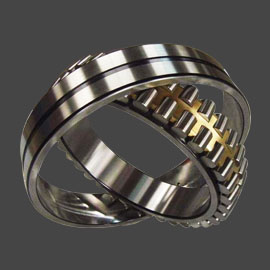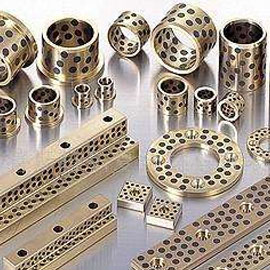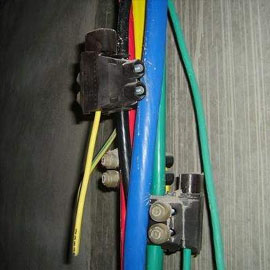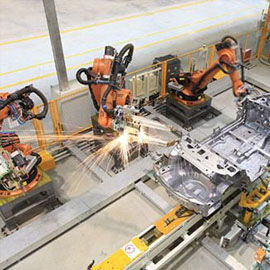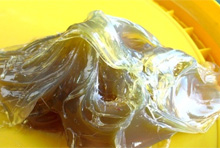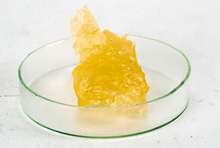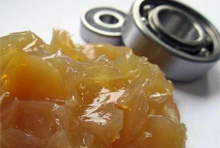Grease for the steel industry generally refers to grease used for roll bearings. Most of them are centralized lubrication. The oil pump (ie, the grease delivery pump) passes through the grease distributor of the centralized lubrication system, and regularly supplies grease to the roller bearings through the fat transfer pipeline. The roller bearings are subject to the radiation of the steel. The temperature of the shaft is higher, and the heat load is different due to the position of the shaft roller. The temperature of the roller bearing in front of the furnace can reach about 200 ℃ (in the presence of cooling water). Generally, the shaft temperature of the steel roller bearing is about 100 ℃. The impact of the working conditions is very bad. Once again, there is dust flying, and the bearings are advanced under the spray of cooling water. Therefore, the following characteristics should be provided for the working conditions of grease: (1) Withstand extreme pressure or impact load, four-ball machine has good extreme pressure. (2) Good high temperature resistance and high dropping point (> 180 ℃). (3) Water resistance, rust resistance, and corrosion resistance are passed, and water resistance is good. (4) Good pumping performance, generally use 0 or 1 consistency fat.
The amount of grease filling has a great impact on bearing operation and grease consumption. Filling the bearing with excessive grease will increase the bearing friction torque, cause the bearing temperature to rise too high, and cause the loss of grease. On the other hand, insufficient or too little filling may cause bearing dry friction and damage the bearing. Filling too much grease will also cause excess grease to leak from the lubricating parts, which will adversely affect the operation of the machine. There are many different empirical formulas for the proper filling amount of grease. Generally speaking, the filling amount of sealed bearings and grease is 1 / 3-2 / 3 of the internal cavity of the bearing when the bearing is filled with grease.
Due to the influence of the external environment (such as air, water, dust, or other harmful gases) on the working parts, and the relative motion of the working parts to produce mechanical forces (such as stamping, shearing, etc.), two changes will occur. : (1) Chemical changes: Grease components (base oil, thickener) may undergo oxidative deterioration due to the effects of light, heat, and air. Base oils undergo oxidation to form trace amounts of organic acids, aldehydes, ketones, and lactones. Components, thickeners, fatty acids, and organic metal salts may decompose to form trace amounts of organic acids. Therefore, the generation of acidic substances (increased grease acid value) causes corrosion of the lubricated parts, and rusts and loses Lubrication and protection. (2) Physical changes: due to the mechanical action, the structure of the grease is deteriorated or even destroyed, the consistency of the grease is reduced, and the lubrication effect is deteriorated, or because the sealing conditions of the mechanical lubrication components are not good, the grease is mixed with lime soil, impurities and moisture. Deteriorating grease quality. Judgment method: grease can be visually or feel dusty, mechanical impurities, or whitened, lightened, or the consistency is significantly reduced, or the smell of rancidity of grease can be explained. Fat deterioration. Using the instrumental analysis method, the most direct judgment is to take a small amount of used samples and determine whether there are 1,720 cm-1 absorption peaks in the sample with an infrared spectrometer. Or determine the change in the absorption peak of the sample before and after use. The carbonyl index is the ratio of the two absorption peaks of 1710 cm-1 and 1378 cm-1. Or directly measure the acid value of the sample. If the acid value is greater than 1.0mgKOH / g, it is clear that the grease has begun to deteriorate.
Grease is a colloid. The structure of grease in use and storage will change due to various external factors. When stored in the warehouse, the temperature should not be higher than 35 ℃, and the packaging container should be sealed to prevent leakage of moisture and foreign impurities. After opening the barrel to take samples or products, do not leave holes in the packaging barrel. The surface of the fat after taking the sample should be smoothed to prevent pits, otherwise the base oil will be squeezed by natural gravity and penetrate into the left over from the sampling. The pits affect the quality of the product.
The dropping point of a grease is a conditional test result, which can only indicate the temperature at which a certain kind of grease melts or softens and drops under a uniform test condition. It does not indicate its operating temperature. For soap-based greases. Generally, it can be used at about 30 ° C below the dropping point without problems, and the structure of the fat will not be damaged. With the development of science and technology, there are a variety of thickeners for grease, such as carbon black, silicone and other fats have no drip point, that is, no dripping under test conditions. The upper temperature limit for the use of a grease is restricted by two types of grease-making materials. One is the base oil, which will undergo oxidative deterioration when the temperature rises, accompanied by evaporation loss. Generally speaking, the upper temperature limit of the grease is greatly restricted by the nature of the base oil. The maximum upper temperature limit of the mineral lubricating oil is 120-150 ° C, and it can withstand 180 ° C for a short time (for high viscosity and refined products) . Most greases are based on mineral oil. Base oils should not be used at too high a temperature.
After being stored for a period of time, most greases become thicker (that is, the measured value of cone penetration), that is, they become hard. If they do not exceed 1 consistency number, they can be used directly without affecting general lubrication. If the consistency changes greatly, it means that the base oil is excessively separated, which may increase the frictional resistance during the lubrication of mechanical parts and increase the consumption of mechanical power, which is not suitable for direct use. Some users add base oil to the hardened (or thickened) grease to make it thinner to reduce the consistency of the fat (ie, become softer). This method is not suitable for users because it lacks the necessary homogenization process , The stability of grease colloid becomes worse, and the increase of oil separation will affect the use. When the thickened grease has little change in other physical and chemical properties, the same base oil can be added in the production plant, and after homogeneous chemical treatment and analysis and testing, it can be used.
the professional team to service !
 86-13380181800
86-13380181800 Leo@keermo.com
Leo@keermo.com Leo@keermo.com
Leo@keermo.com 86-13380181800
86-13380181800
 86-13380181800
86-13380181800 Leo@keermo.com
Leo@keermo.com
